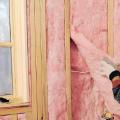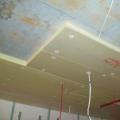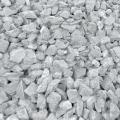Composition of expanded clay concrete per 1 cubic meter
Expanded clay concrete is a very popular material in the construction industry. It has a lot of positive properties that help make the building suitable for use in accordance with all operating rules, and is in no way inferior in this regard to other types of concrete. What is this material? What components are included in expanded clay concrete? In what proportions are the ingredients mixed per 1m3? The answers can be found below.
It is not difficult to prepare expanded clay concrete mortar. This building material contains high quality cement and fine expanded clay, made from exclusively natural raw materials. For greater density, sand is mixed into the solution. Sawdust or ash can also be added.
The proportion of the material can be compiled directly on the construction site. Professionals in this matter give several recommendations that should not be neglected:
- When preparing the mixture, take into account the quality characteristics of the raw materials used: humidity, grain size;
- If you want to increase the strength and elasticity of the future building material, add quartz sand during mixing. In this case, expanded clay gravel is acceptable without expanded clay sand and moisture-sensitive cement, the addition of which usually makes the finished structure vulnerable to moisture;
- as a binder, as a rule, Portland cement with a minimum marking of M400 is used, which does not have plasticizing components that provoke a decrease in the strength of the finished product at the initial stages;
- The strength of the finished product can be increased by adding cement to the composition of expanded clay concrete. However, this leads to an increase in the volumetric mass of the building mixture;
- if heat treatment of expanded clay concrete material is planned, then preparation should be carried out from alite cement;
- to work with solid expanded clay concrete, more expanded clay is added inside the solution.
 The density and structure of the finished blocks, which are:
The density and structure of the finished blocks, which are:
- large porous;
- with intergranular pores;
- coarse- and fine-grained;
- quite dense;
- with medium thickness.
For a mixture with moderate density, coarse expanded clay is used. Such a solution often acts as a heat insulator. Fine expanded clay is used in the construction of load-bearing structures and interior walls. It is used to produce expanded clay concrete monoliths of various sizes, marked M50, M75, M100.
The smaller the expanded clay granules, the denser and heavier the finished material will be. In this case, its thermal insulation properties are lost. Therefore, in order to achieve a golden mean, manufacturers of expanded clay concrete building materials often combine small and large expanded clay.
Approximate ratio of ingredients
When producing expanded clay concrete mixtures for the construction of private houses, the following generally accepted proportions of added components, calculated for the M400 cement grade, are practiced:
- expanded clay - 4-5 buckets (depending on the grain size);
- sand - 3-4 buckets;
- cement - 1 bucket;
- water - 1.5 buckets (approximately);
- plasticizer - based on the instructions for this ingredient.
The finer the expanded clay, the more it is added, and the higher the density of the solution will be.
If the plasticizer is liquid soap, then 2-3 caps of a five-liter plastic tank are mixed with the above amount of cement - this comes out to about 100 g.
When pouring water, be guided by the condition and appearance of the solution. It should be buoyant and at the same time viscous. You can check the condition of the mixture like this. Grab it. If a fairly stable mound has formed on the shovel, the solution is good; if the mound spreads quickly, the material is too liquid.
Floor mixture recipe
 Depending on the pouring method, flooring can be dry, semi-dry, or wet. For wet floor screed, the following proportions of expanded clay concrete are used: 4:3:1 – expanded clay/sand/cement. Expanded clay concrete mixture grade M100 is made with this proportion.
Depending on the pouring method, flooring can be dry, semi-dry, or wet. For wet floor screed, the following proportions of expanded clay concrete are used: 4:3:1 – expanded clay/sand/cement. Expanded clay concrete mixture grade M100 is made with this proportion.
Expanded clay concrete for walls
In order to make high-quality concrete from expanded clay for walls, all ingredients are mixed according to the following recipe: 1 portion each of M400 cement and fine-grained expanded clay, 1.5 portions of expanded clay sand. Building blocks produced according to this recipe are perfect for erecting walls of one-story buildings.
Recipe for lightweight expanded clay concrete
As is already known, the smaller the granules of expanded clay used, the denser the final material will be. The specific gravity of light grades of mortar can reach 1000 kg/m³. At the same time, the presence of cement inside the mixture is reduced, and expanded clay, on the contrary, increases. There may be no sand here at all. For a sandless mixture, based on 1 m3, the following proportions are used:
- 720 kg of expanded clay brand M200;
- 250 kg of cement sand;
- 100-150 liters of water.
Let's sum it up
In order to efficiently carry out the construction of the planned project from expanded clay concrete, you should choose the right proportions for the manufacture of building materials.
After all, not only its quality characteristics depend on this, but also the performance indicators of a structure built from expanded clay concrete.
 Construction materials and list of works
Construction materials and list of works Proper insulation of a wooden ceiling in a private house
Proper insulation of a wooden ceiling in a private house What types of crushed stone are there?
What types of crushed stone are there?